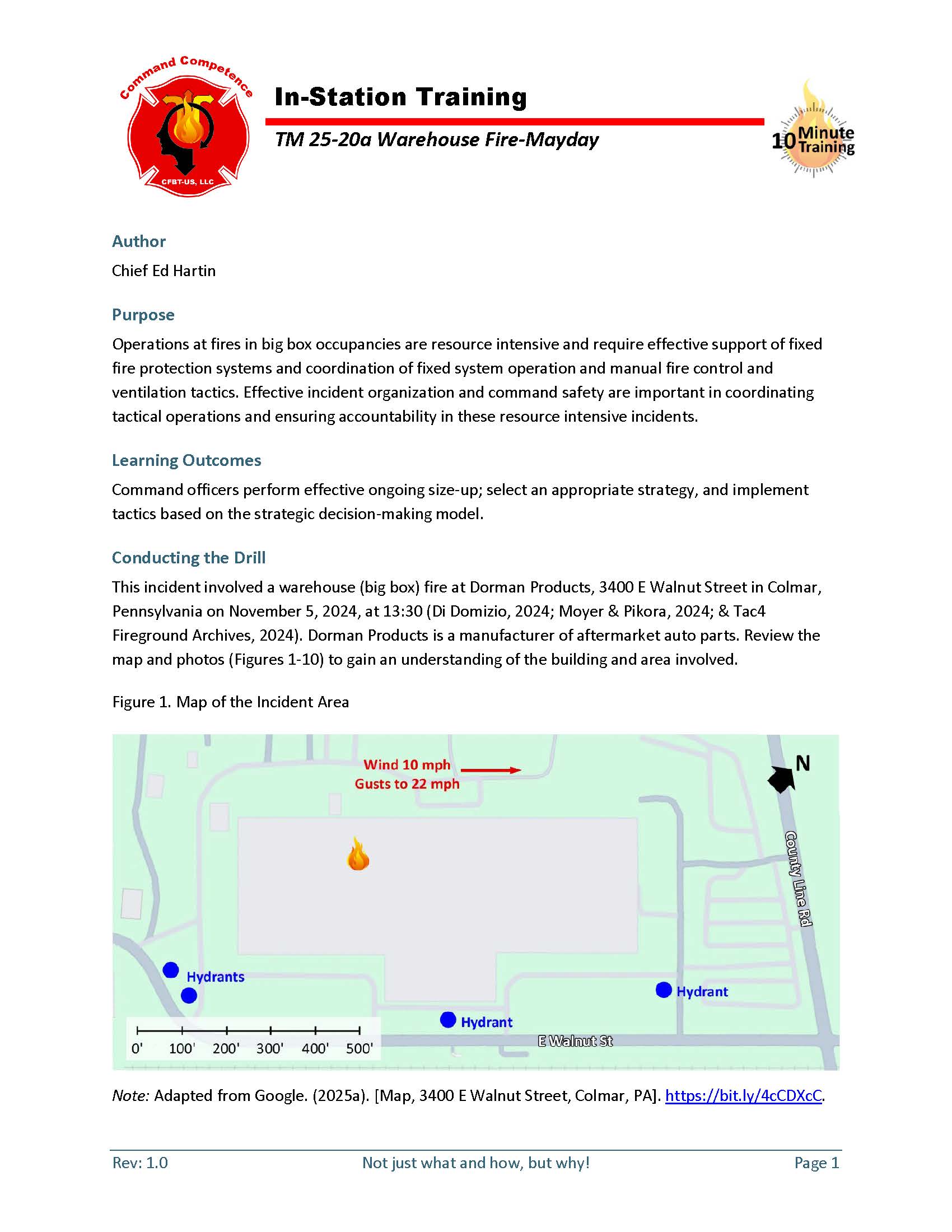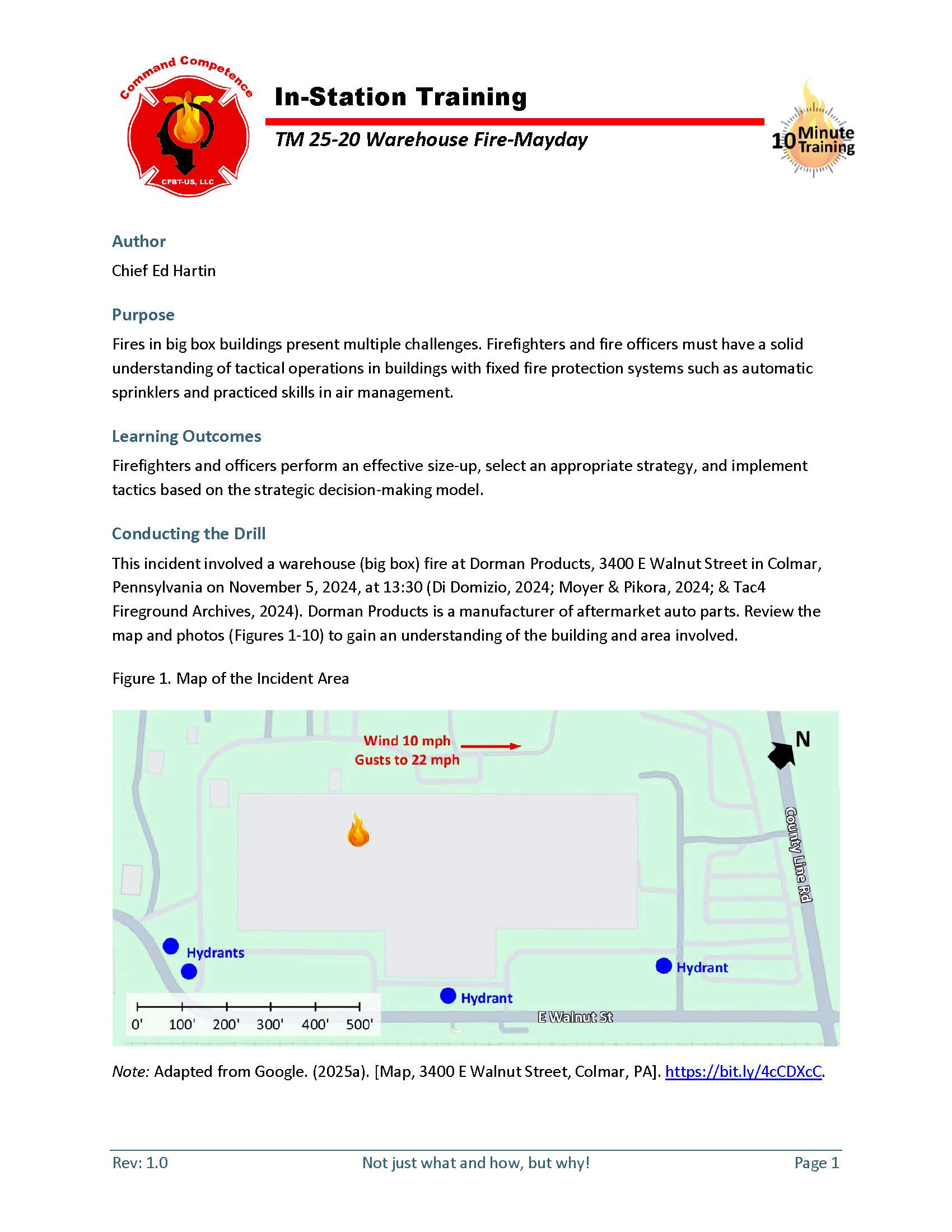At the beginning of Mastering Tactics, Major John Schmidt, USMCR states “In war there is no substitute for experience, no substitute for the intuitive skill that comes from repeated practice. Tactical decision games are a practice field for the tactical leader”.
The IC’s Practice Incident Space
10-Minute Trainings are a practice incident space for fire service task, tactical, strategic level leaders. The first company officer arriving at an emergency incident (IC #1) functions at all three levels (no small responsibility). A later arriving command officer (IC #2) functions at the strategic and tactical level unless they assign division supervisors to manage tactical operations in a specific area of the hazard zone (in which case the IC can focus on the strategic level). 10-Minute Trainings focus on the role of IC #1, IC #2, or tactical level bosses such as division or group supervisors.
Consider the following key concepts in the use of 10-Minute Training:
- Time constraint. For IC #1 a 10-Minute Training should only take 10-Minutes to address questions related to your company, the second arriving company, and transfer of command (you would likely not have any longer on the fireground). Answer these questions without discussion. In 10-Minute Trainings for IC #2, the time constraint impacts assessment of the actions that have and are being taken, transfer command, and to reinforce or adjust the incident action plan (IAP).
- Limited information. You do not have all the information that you might like when completing a 10-Minute Training. You likely will have far less information and greater ambiguity on the fireground.
- Radio communication. After the first question related to critical factors considered during response, the answers to questions related to the initial radio report, update report, orders to other companies, and transfer of command are in the form of radio communications (to your crew and other companies as IC #1, and to companies as IC #2). Remember that “verbal clarity requires…intense practice” (p.28, Mattis & West, 2019).
- Decide, then discuss. After transfer of command, then discuss responses to questions related to strategy, risk management, and action planning.
- Questions about the incident. 10-Minute Trainings are based on actual incidents. The additional questions provided in the training will extend beyond the 10-minute timeframe but provide an opportunity to extend learning by examining incident operations as they occurred.
- Additional learning. Each 10-Minute Training includes suggestions for further study on related topics or ways to integrate the lessons provided by the training and additional learning with hands-on skills.
Firefighters and officers must be competent in a wide range of physical skills and in the decision-making and communications skills necessary to function effectively as a team.
Shared Learning
When completing 10-Minute Training in a group, consider assigning the roles of the other companies and command officer to different people (if the size of the group permits). After completing the initial set of questions, ask the role players to state what actions they would have taken based on the communications the IC provided. Discussion and assessment of these actions can focus on the tactical and/or task level. This discussion provides an excellent opportunity to build shared understanding.
Here are the Latest 10-Minute Trainings!
Here are the latest 10-Minute Trainings developed by Command Competence. Sign up to receive new 10-Minute Trainings every week! Go to the searchable 10-Minute Training Library to access prior 10-Minutes Trainings
10-Minute Training Library
To access previous 10-Minute Trainings visit the 10-Minute Training Library a searchable database of all 10-Minute Trainings. Prior to 2025, 10-Minute Trainings were created for East County Fire and Rescue (2023-2024) and Central Whidbey Island Fire and Rescue (2017-2022).


